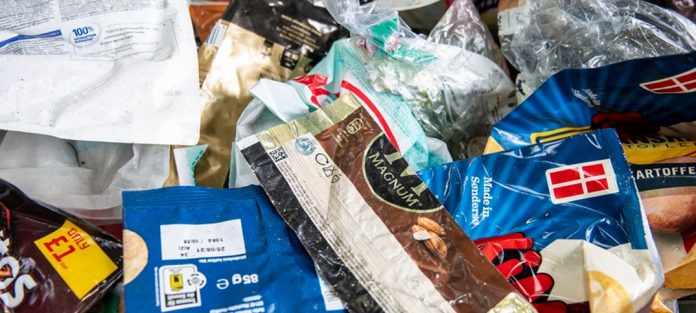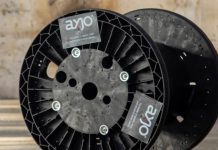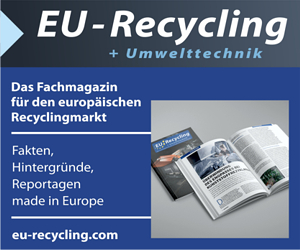The Digital Watermarks Initiative HolyGrail 2.0, driven by AIM – European Brands Association and powered by the Alliance to End Plastic Waste, has achieved a significant milestone with the successful validation, after semi-industrial testing mimicking real-life conditions, of the prototype detection unit for digital watermarks.
The results show that the digital watermark technology can achieve more granular sorting of packaging waste at scale, such as developing separate food and other new PCR streams that currently do not exist (e. g. for cosmetic or detergent applications). This would open up new recycling streams, effectively overcoming limitations of current near-infrared (NIR) sorting technologies, and drive a true circular economy for packaging. Consistent high results across all tested categories of plastic packaging material of 99% detection, 95% ejection and 95% purity rates, on average, demonstrate an impressive performance of the first prototype. Developed by the machine vendor Pellenc ST and the digital watermarks technology supplier Digimarc, the detection unit is now ready for industrial-scale pilots, which are planned to start later this year. Details on industrial partners and packaging scope will be released at upcoming conferences.
We have achieved our objective of proving digital watermarks can increase intelligent sorting of packaging waste at scale, enabling new recycling streams that currently do not exist. This would be a fantastic leap forward in achieving the EU recycling goals,“ remarked Michelle Gibbons, Director General of AIM. „Innovation and digital are the core drivers towards the Green Transition and this has been brought to life through HolyGrail 2.0. The engagement across the value chain by dedicated experts and teams to get to this point has been remarkable; now, market participants can decide to be part of industrial-scale pilots, to test this at an even bigger scale in Europe.“
„The completion of the semi-industrial trials is a very important milestone in the HolyGrail 2.0 initiative. We are one step closer to making intelligent waste sorting a reality through digital watermarks,“ said Jacob Duer, President and CEO of the Alliance to End Plastic Waste. „The HolyGrail project is an excellent example of how engaged and committed businesses coming together around a very clear goal can accelerate the development of new solutions. As we move into the next stage of in-market demonstrations, we strongly encourage more businesses and partners to join us in scaling up testing and adoption.“
Timeline of semi-industrial tests and detailed results
The semi-industrial tests of the Pellenc ST/Digimarc prototype started in October 2021 at the Amager Resource Center in Copenhagen. The purpose was to evaluate the technology by replicating real-world industrial conditions. Comprehensive sets of tests were successfully performed on approximately 125,000 pieces of packaging from 260 stock-keeping units (SKUs) at 3 m/s belt speed, with soiling/crushing and throughput representing routine industrial operations. Additional tests were also performed at a higher belt speed of 4.5 m/s, with severe soiling and crushing, without loss of performance.
Validation tests commenced in January 2022 as concluding evaluations of the wide-ranging semi-industrial tests, focusing on the readiness of the Pellenc ST/Digimarc prototype for deployment in large-scale pilots in commercial sorting and recycling facilities. Success criteria included detection efficiency, ejection efficiency, purity, prototype stability and routine function, ease of programming the sorting operation, and counting capabilities of the prototype. The ejection operation comprised a software combination of digital watermark detection and NIR detection to identify both watermarked and non-watermarked items, as would be encountered in an industrial sorting or recycling facility. Based on observations from the January tests, the combined signal of NIR/digital watermarks detection was refined to further improve the purity of the sorted output.
Final validation tests were completed this month at the headquarters of Pellenc ST where detection/ejection efficiency and purity for sorting PET, PP and PE rigids and flexible films were evaluated. Each category was sorted at 3 m/s, at as close to nominal throughput and occupancy as feasible for the prototype system setup. Parameters for the combination of digital watermark detection and NIR detection, and for ejection, were set appropriately for each category. The sorting programme was configured to eject or reject items on an SKU-specific basis.
Source: Digital Watermarks Initiative HolyGrail 2.0






